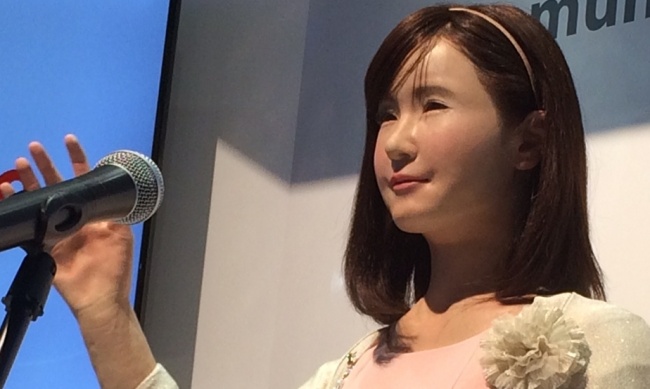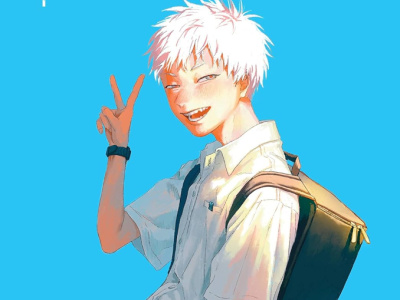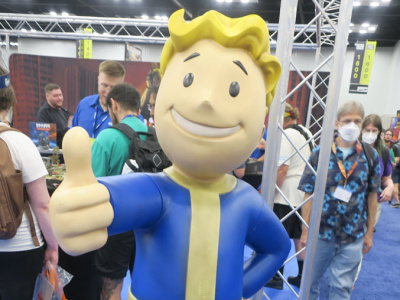Though a show like CES is only tangentially related to geek culture in a formal way, many of the products and technologies on display at the Vegas Convention Center are the canvases on which the creators of entertainment present their works to an increasingly wired audience. Here are a few items of interest from the show floor that touch on gaming, comics, toys and genre entertainment.
Curves are sexy but the devil is in the details. Last year’s CES saw the mainstream debut of 4K video displays, the next generation of super high resolution TVs and computer monitors. Anyone who enjoys the clarity of 1080p full HD resolution might wonder what quadrupling the pixel count really buys you, but 4K stormed the market this year and is poised to become the standard for large screen displays.
This year’s CES threw a curve into the picture, literally. Almost all the large manufactures were exhibiting models with screens that curve to encompass the viewer’s peripheral vision. Some models feature 3D effects without the need for special glasses.
Ready to run out and upgrade? Not so fast. Lurking in the corners of the larger booths were prototypes of high contrast 8K displays, offering resolutions 64 times as detailed as HD if you can even imagine that. By the time we’re watching Avengers 3 on home video, sometime toward the end of the decade, we’ll be able to zoom in close enough to see Ant Man’s nose hairs. Stay tuned!
Pens are mightier. Artists who dream of using their iPads as digital sketchbooks have had to make do with styluses that use software trickery to simulate the pressure sensitivity of professional digital art tools like the Wacom Cintiq tablet. The first generation of these Bluetooth drawing tools were hampered by imprecise fat nibs necessary to fool the iPad screen into accepting input from something other than a human finger.
This year, most of the leading manufacturers were out with sleeker thin tipped styluses, such as Wacom’s Intuos Creative 2 model and Adonit’s Jot Fine Point. These next gen models have the heft and balance of a traditional pen with improved feel and precision of a smaller nib. Combined with the powerful processors in the current generation of iPads and full featured apps like Autodesk Sketchbook or ArtRage, these pens give artists the ability to do studio-quality digital work just about anywhere. For those who still need the high end professional equipment, Wacom debuted its new 27 inch Cintiq, as well as a portable model that can work as a standalone tablet or an accessory to a more powerful desktop.
Illuminating cosplay. Some of the more offbeat items on display were LED-enabled smart fabrics. These are textiles embedded with LEDs and other luminescent materials that can react to ambient conditions. That is, they can change depending on lighting, sound or changes in temperature. Designers showed off garments that subtly change color to complement the background, and others with patterns that glow and change to the beat of music. Some of the concepts on display looked like something out of Blade Runner. “They’re popular in Japan,” one designer remarked. They also look like they could be an interesting addition to the repertoire of cosplayers.
Heads up! VR is still right around the corner. Some of the coolest advances in virtual reality such as the Oculus Rift and Sony’s Project Morpheus are still winding their way through the design and development process on the way to market, but this year they were joined by some others taking a different approach: creating a headmount for a smartphone and using that as the VR display instead of purpose-built hardware.
This has a couple of advantages. The emerging generation of smartphones has powerful processors and high resolution displays capable of handling VR imagery, especially if most of the heavy lifting is done through the cloud. Almost everyone already has a smartphone, so you don’t have app developers waiting on the sidelines until devices achieve enough market share to make it worth their while.
I test drove one product, ImmersiON-VRelia’s “Go,” which combines a comfortable adjustable head mount that fits Android or iOS smartphones, a handheld controller, and a software development kit to enable the creation of immersive 3D worlds. While not as responsive or detailed as the higher-end products, it was a smooth and compelling experience and a much simpler entry point for gamers and others interested in taking the plunge into VR.
Toy and gaming miniature makers beware: 3D Printing is at the edge of mainstream. Last year, 3D printing startups occupied an aisle at the back of the CES show floor. This year they had their own section of the room, with dozens of vendors offering affordable devices intended to transcend the hobbyist/”maker” niche. Almost all of them were showing off highly detailed toys, gaming figures and pop culture collectibles (busts, sculptures and tableaus from fantasy and superhero genres) as proofs of concept. A couple said they were already working with collectibles companies who display at comic conventions.
This tech is coming soon to consumers, and make no mistake: it has the same potential to disrupt the toy and figure market as digital distribution has already had on the comics business.
Check out Rob’s photos below, in the gallery—ed.
--Rob Salkowitz (@robsalk) is the author of Comic-Con and the Business of Pop Culture.
The opinions expressed in this column are solely those of the writer, and do not necessarily reflect the views of the editorial staff of ICv2.com.





 View Gallery: 6 Images
View Gallery: 6 Images 



